
The Vibrant Heart of Palma: Santa Catalina
Discover Santa Catalina in Palma de Mallorca: A vibrant blend of tradition and modernity, offering bustling markets, charming streets, and a lively nightlife scene.
Santa Catalina, nestled in the west of Palma de Mallorca, is a vibrant neighbourhood that effortlessly blends old-world charm with modern allure. Known for its bohemian vibe, this area is a magnet for both locals and tourists, offering a rich tapestry of experiences that cater to diverse tastes. From its colourful streets lined with traditional Mallorcan houses to its bustling market and trendy eateries, Santa Catalina is a feast for the senses. The heart of Santa Catalina beats strongest at its famous Mercat de Santa Catalina, the oldest food market in Palma. Here, visitors can immerse themselves in the local culture, sampling fresh produce, seafood, and traditional delicacies. The market is a sensory delight with its vibrant stalls and the aromatic scent of spices and fresh flowers filling the air. As the sun sets, Santa Catalina transforms into a lively nightlife hub. The neighbourhood’s streets are dotted with a myriad of bars, cafes, and restaurants offering everything from authentic Spanish tapas to international cuisine. Whether you're looking to enjoy a quiet evening with a glass of local wine or dance the night away, Santa Catalina has something for everyone. Art lovers will find joy in the area's numerous galleries and street art, while history enthusiasts can explore its rich heritage through its architecture and landmarks. Despite its modern touches, Santa Catalina retains a strong sense of community and tradition, making it a unique and unforgettable destination.
Local tips in Santa Catalina
- Visit Mercat de Santa Catalina early in the morning to experience the market at its liveliest and get the freshest produce.
- Wear comfortable shoes as the best way to explore Santa Catalina is on foot, allowing you to discover hidden gems in its narrow streets.
- Try the local tapas at one of the many bars for an authentic taste of Mallorcan cuisine.
- Check out the local art galleries for a glimpse into the vibrant art scene of Palma.
- Take a stroll in the evening to enjoy the lively atmosphere and explore the diverse nightlife options.
The Vibrant Heart of Palma: Santa Catalina
Santa Catalina, nestled in the west of Palma de Mallorca, is a vibrant neighbourhood that effortlessly blends old-world charm with modern allure. Known for its bohemian vibe, this area is a magnet for both locals and tourists, offering a rich tapestry of experiences that cater to diverse tastes. From its colourful streets lined with traditional Mallorcan houses to its bustling market and trendy eateries, Santa Catalina is a feast for the senses. The heart of Santa Catalina beats strongest at its famous Mercat de Santa Catalina, the oldest food market in Palma. Here, visitors can immerse themselves in the local culture, sampling fresh produce, seafood, and traditional delicacies. The market is a sensory delight with its vibrant stalls and the aromatic scent of spices and fresh flowers filling the air. As the sun sets, Santa Catalina transforms into a lively nightlife hub. The neighbourhood’s streets are dotted with a myriad of bars, cafes, and restaurants offering everything from authentic Spanish tapas to international cuisine. Whether you're looking to enjoy a quiet evening with a glass of local wine or dance the night away, Santa Catalina has something for everyone. Art lovers will find joy in the area's numerous galleries and street art, while history enthusiasts can explore its rich heritage through its architecture and landmarks. Despite its modern touches, Santa Catalina retains a strong sense of community and tradition, making it a unique and unforgettable destination.
Iconic landmarks you can’t miss
Catedral-Basílica de Santa María de Mallorca
Explore the breathtaking Gothic architecture and rich history of the Catedral-Basílica de Santa María de Mallorca, a must-visit landmark in Palma.
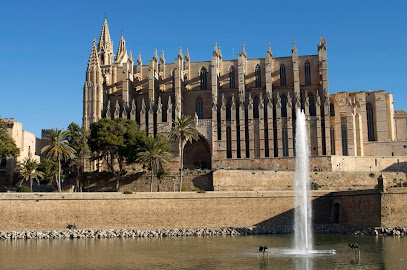
Plaça d'Espanya
Discover the vibrant historical heart of Palma at Plaça d'Espanya, where culture, architecture, and local life come together in a stunning plaza.
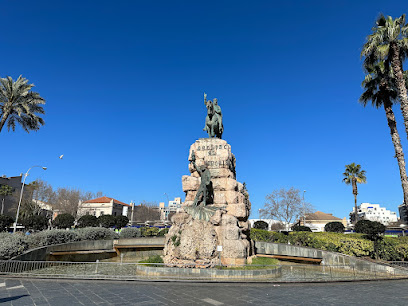
Castell de Bellver
Discover the enchanting Castell de Bellver in Palma, a historical castle offering breathtaking views and rich cultural insights from Mallorca's past.
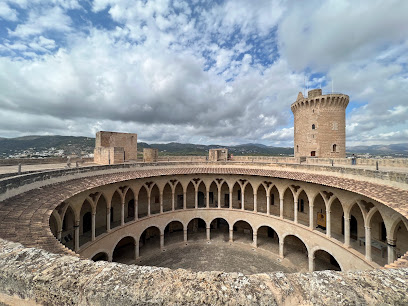
Parc de Sa Feixina
Unwind in the lush greenery of Parc de Sa Feixina, a serene oasis in Palma showcasing local culture and stunning landscapes.
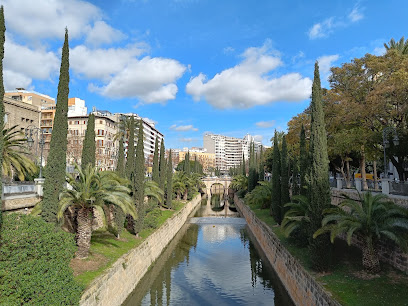
Baluard de Sant Pere
Experience the rich history and breathtaking views at Baluard de Sant Pere, a must-visit landmark in the heart of Palma, Balearic Islands.
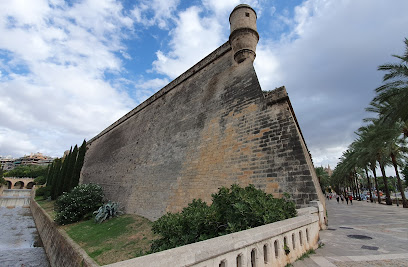
Device to Root out Evil
Explore the captivating 'Device to Root out Evil' sculpture in Palma, a thought-provoking landmark reflecting the city's artistic heritage and cultural depth.
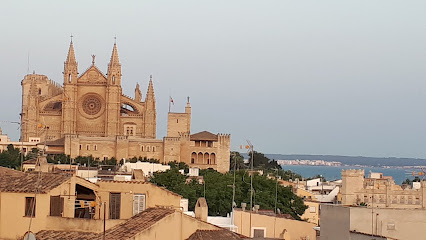
Poble Espanyol
Immerse yourself in the architectural beauty and vibrant culture of Poble Espanyol, Palma's open-air museum showcasing the essence of Spain.
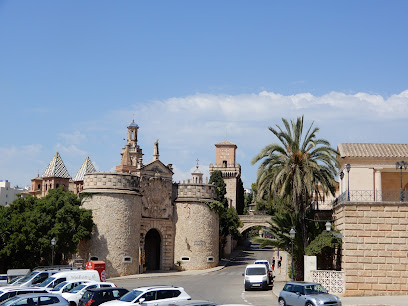
Plaça de la Porta de Santa Catalina
Discover the tranquil beauty and historical charm of Plaça de la Porta de Santa Catalina in the heart of Palma, a perfect escape for tourists.
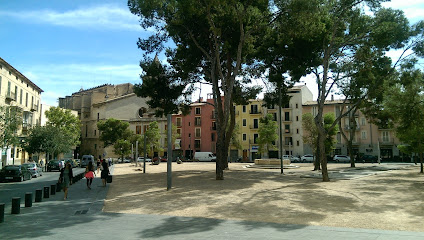
Mural del barrio de Santa Catalina
Explore the Mural del Barrio de Santa Catalina, a vibrant artistic landmark in Palma that embodies the local culture and creativity of Mallorca.
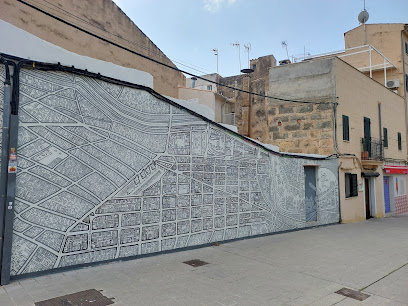
SANTA CATALINA
Experience the vibrant culture and rich history of Santa Catalina, Palma's charming neighborhood filled with markets, eateries, and stunning architecture.
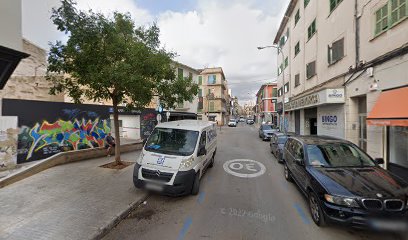
Unmissable attractions to see
Catedral-Basílica de Santa María de Mallorca
Discover the stunning Gothic beauty of Catedral-Basílica de Santa María de Mallorca, a must-see historical landmark in Palma, Spain.
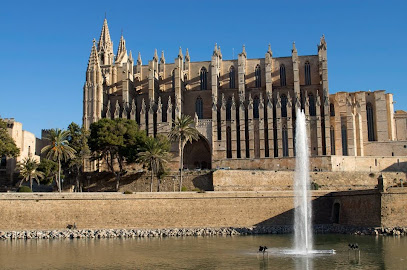
Palma Aquarium
Explore the breathtaking marine life and interactive exhibits at Palma Aquarium, a top tourist attraction in Palma de Mallorca, Spain.
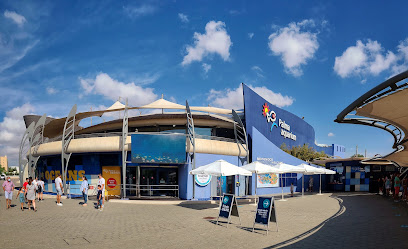
Royal Palace of La Almudaina
Explore the Royal Palace of La Almudaina, a historical gem in Palma showcasing a fusion of Gothic and Moorish architecture amidst stunning gardens.
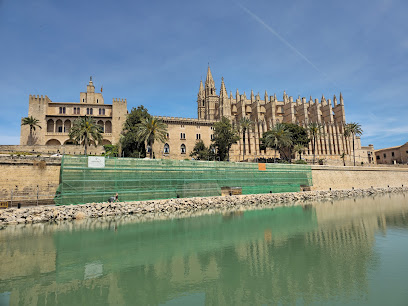
Parc de Sa Feixina
Explore the natural beauty and calming ambiance of Parc de Sa Feixina, a must-visit park in Palma, Balearic Islands.

Llotja de Palma
Explore the stunning Llotja de Palma, a Gothic jewel in the heart of Palma, where history meets vibrant culture and artistic expression.
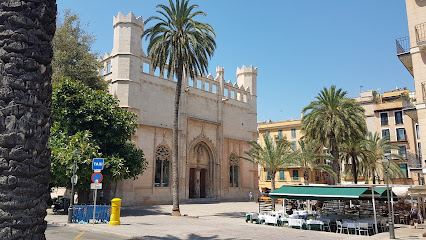
Poble Espanyol de Mallorca
Explore the architectural beauty and cultural richness of Spain at Poble Espanyol de Mallorca, an open-air museum in Palma.
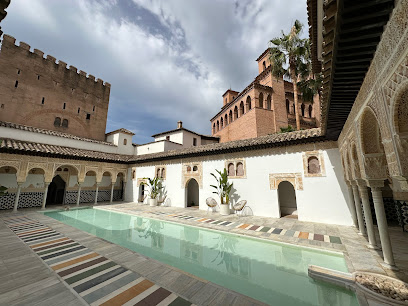
Baluard de Sant Pere
Explore the historic Baluard de Sant Pere in Palma, a stunning bastion offering breathtaking views and captivating insights into the city's rich architectural heritage.
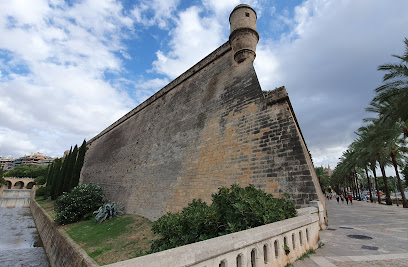
Sants de Mallorca
Discover the serene beauty and historical significance of Sants de Mallorca, a charming landmark in the heart of Palma, Balearic Islands.
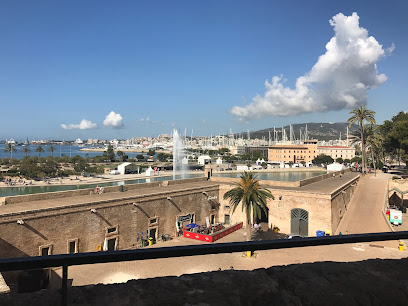
Costa de la Seu
Experience the rich history and stunning views at Costa de la Seu, Palma's enchanting tourist attraction where culture and beauty meet.
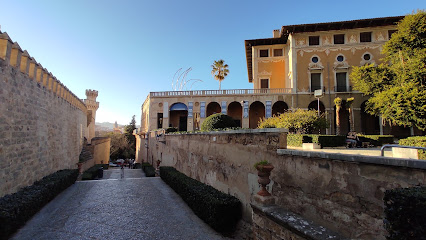
Mural del barrio de Santa Catalina
Explore the vibrant Mural del barrio de Santa Catalina in Palma, an artistic landmark celebrating the culture and creativity of the Balearic Islands.
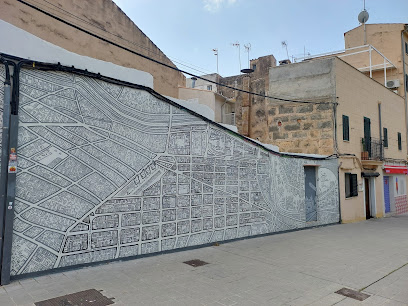
Essential places to dine
La nueva burguesa
Discover La Nueva Burguesa in Palma - where gourmet burgers meet vibrant ambiance, perfect for every food lover's palate.
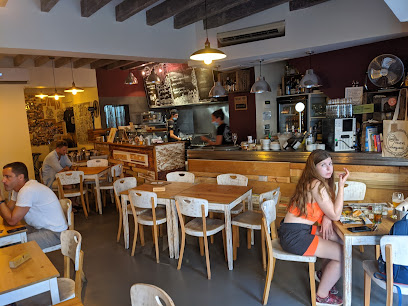
S'Àngel
Experience the vibrant fusion of Mediterranean and Spanish cuisine at S'Àngel in Palma - A culinary delight not to be missed.
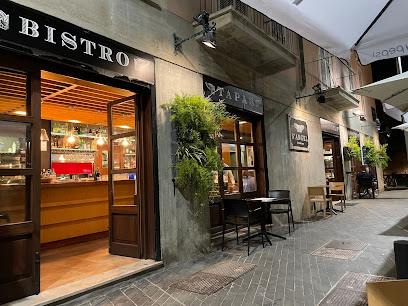
Duke Restaurant
Discover exquisite Mediterranean flavors at Duke Restaurant in Palma - where culinary excellence meets warm hospitality.
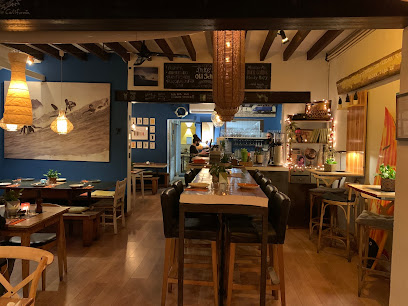
La Bottega di Michele
Experience authentic Italian cuisine at La Bottega di Michele in Palma; where flavor meets tradition in a charming Mediterranean setting.
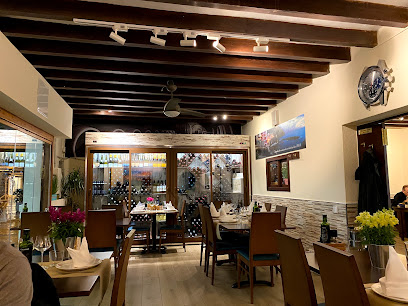
Restaurante Can Joan Frau
Experience the vibrant flavors of Palma at Restaurante Can Joan Frau, where traditional tapas meet a lively bar atmosphere.
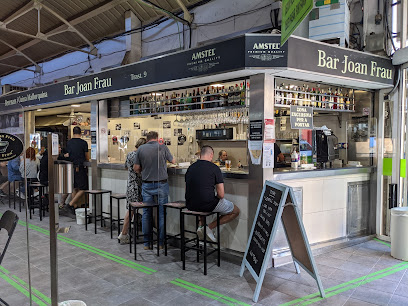
Diecisiete Grados
Experience authentic Mediterranean and Spanish cuisine at Diecisiete Grados in Palma - where vibrant flavors meet exceptional service.
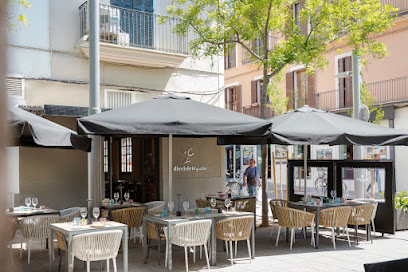
Buscando el Norte Santa Catalina
Discover authentic Spanish cuisine at Buscando el Norte Santa Catalina in Palma - where every dish tells a story.
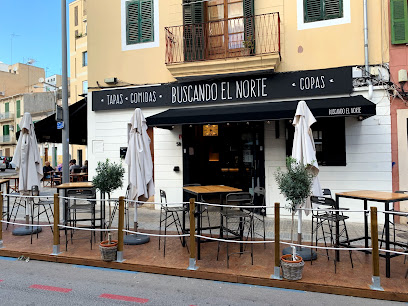
Kuroböta
Discover Kuroböta: Palma's premier destination for authentic Italian cuisine, where every meal is a celebration of flavor and tradition.
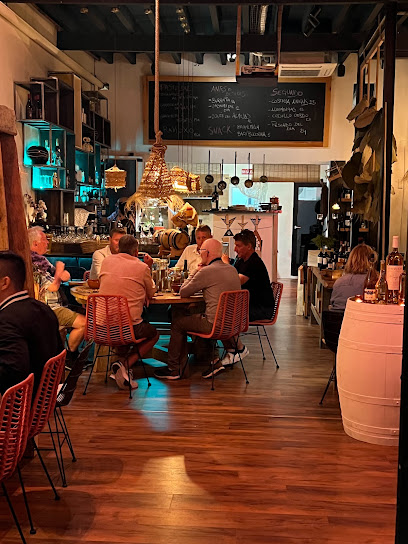
FABRICK food & more
Discover FABRICK food & more in Palma: where exquisite flavors meet vibrant ambiance for an unforgettable dining experience.
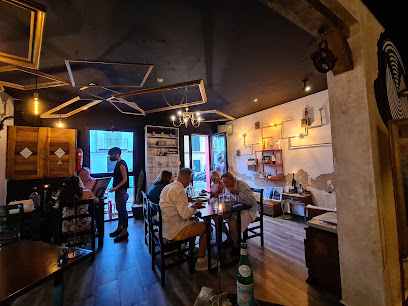
Bistro Esencia
Discover culinary artistry at Bistro Esencia in Palma—where fine dining meets Mediterranean flavors in an unforgettable setting.
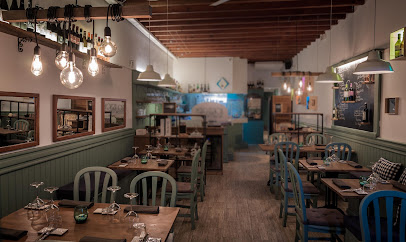
Markets, malls and hidden boutiques
Maricastaña
Discover the essence of Palma's fashion at Maricastaña, where style meets quality in a vibrant shopping experience.
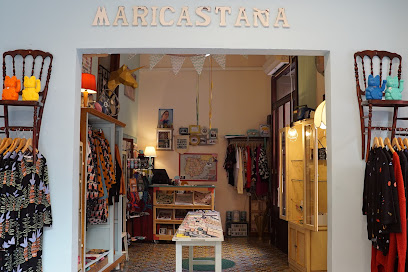
thomas bakeshop boutique
Discover the charm of Thomas Bakeshop Boutique, where every pastry tells a story and every bite is a taste of Mallorca's culinary heritage.
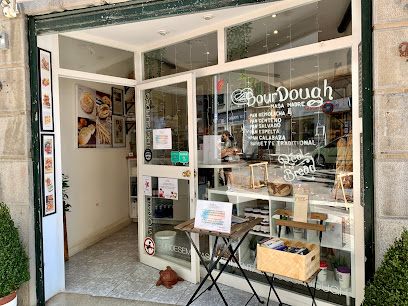
Natura
Explore Natura in Palma for unique gifts and home goods that capture the beauty and spirit of the Balearic Islands.
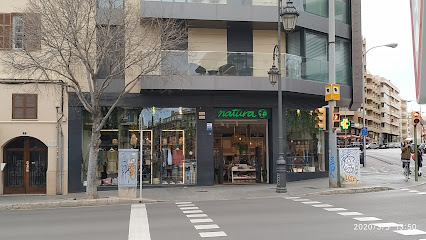
La Insular
Explore La Insular, Palma's charming gift shop for unique local treasures and authentic souvenirs that capture the essence of the Balearic Islands.
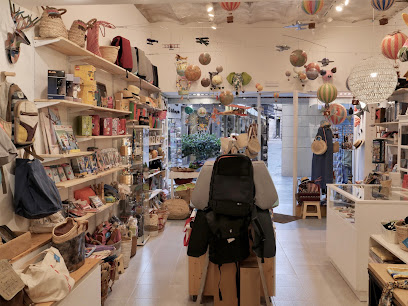
Forum Shop
Discover Palma's premier fashion destination at Forum Shop, offering exquisite dresses, stylish bags, unique jewelry, and more in a chic shopping environment.
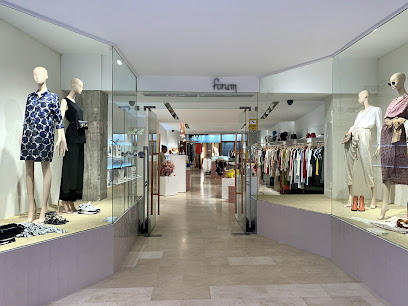
Villa Vintage
Explore Villa Vintage in Palma for unique, sustainable fashion that tells a story with every piece you wear.
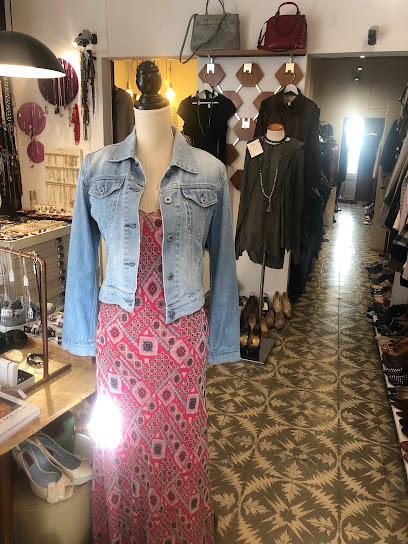
DETUaMI
Explore the vibrant thrift scene at DETUaMI in Palma, where vintage clothing and unique finds await every treasure hunter.
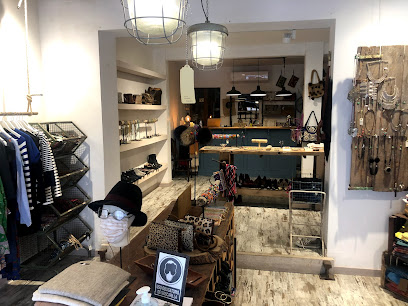
POP MALLORCA
Explore POP MALLORCA: A charming women's clothing store in Palma, featuring unique antiques and stylish home decor to enhance your shopping experience.
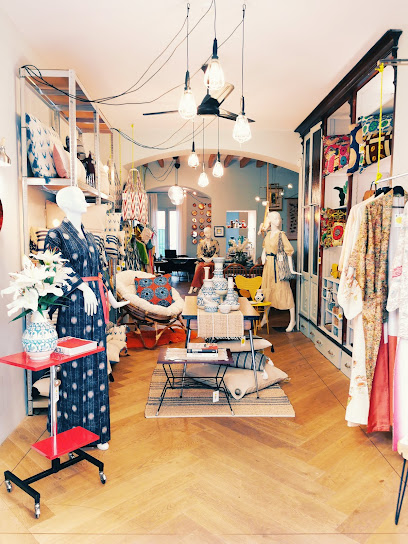
Pretty Victor - Fashion Store Palma Mallorca
Explore Pretty Victor in Palma Mallorca for the latest in women's fashion, unique handbags, and exquisite costume jewelry, a true shopping gem!
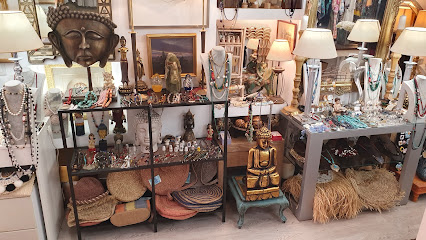
Yoyo Urban Chic
Discover unique gifts and local artistry at Yoyo Urban Chic, a charming gift shop in Palma's vibrant Ponent district.
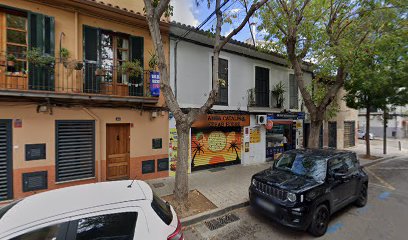
Essential bars & hidden hideouts
Up and Down
Experience the vibrant nightlife at Up and Down in Palma, where cocktails and a lively atmosphere await you in the heart of the Balearic Islands.
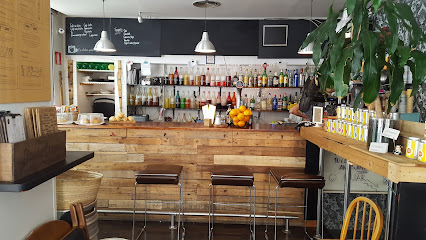
Havanna
Experience the vibrant nightlife of Palma at Havanna, a lively bar known for its delicious cocktails and welcoming atmosphere.
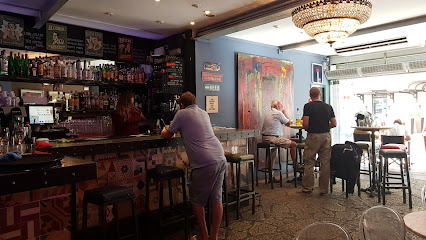
Agabar Cocktail Bar
Experience the vibrant nightlife of Palma at Agabar Cocktail Bar, where expertly crafted cocktails and a lively atmosphere await you.
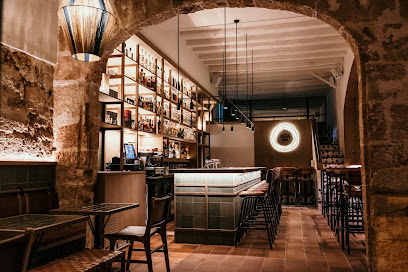
Bar LAB
Experience the art of mixology at Bar LAB, Palma's premier cocktail bar, where vibrant flavors and a chic ambiance await every visitor.

Ventuno Bar Italiano
Discover the authentic taste of Italy at Ventuno Bar Italiano in Palma, where vibrant atmosphere meets exquisite cuisine.
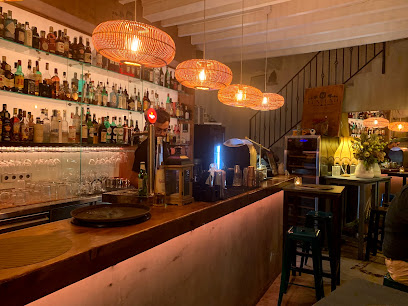
Chakra
Discover the vibrant atmosphere of Chakra in Palma, where creative cocktails and local flavors come together for an unforgettable night out.
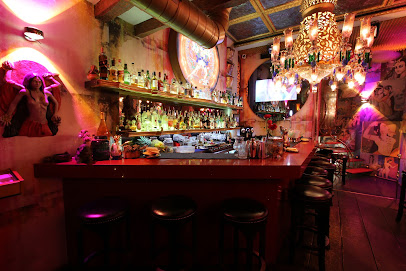
The Library STFU
Discover The Library STFU, Palma's charming cocktail bar, where innovative drinks and a cozy atmosphere create unforgettable nights out.
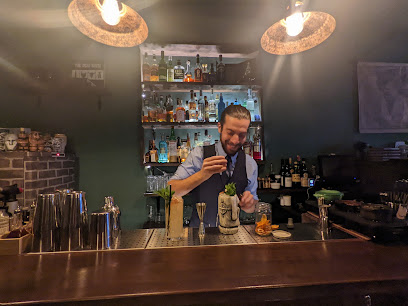
Blueagavepalma
Discover the vibrant nightlife of Palma at Blueagavepalma, a cocktail bar renowned for its innovative drinks and lively atmosphere.
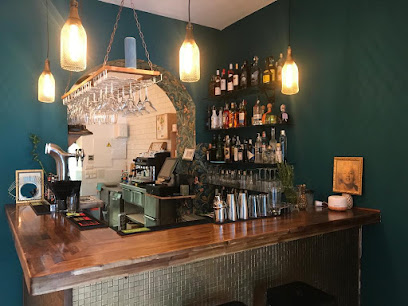
Etoh Cocktail Bar
Discover the vibrant atmosphere of Etoh Cocktail Bar in Palma, where expertly crafted cocktails and a lively ambiance await every visitor.
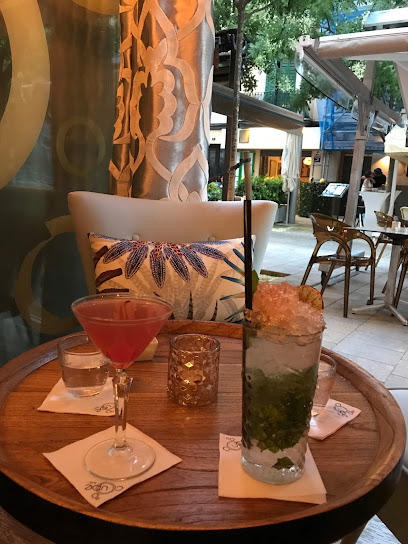
NOX
Experience the best cocktails in Palma at NOX, where creativity meets sophistication in a stylish cocktail bar atmosphere.

Local Phrases
-
- HelloHola
[oh-lah] - GoodbyeAdiós
[ah-dee-ohs] - YesSí
[see] - NoNo
[noh] - Please/You're welcomePor favor/De nada
[por fah-vor/deh nah-dah] - Thank youGracias
[grah-see-ahs] - Excuse me/SorryPerdón/Lamento
[pehr-dohn/lah-mehn-toh] - How are you?¿Cómo estás?
[koh-moh ehs-tahs] - Fine. And you?Bien. ¿Y tú?
[byehn. ee too] - Do you speak English?¿Hablas inglés?
[ah-blahs een-glehs] - I don't understandNo entiendo
[noh ehn-tee-ehn-doh]
- HelloHola
-
- I'd like to see the menu, pleaseMe gustaría ver el menú, por favor
[meh goos-tah-ree-ah vehr ehl meh-noo, por fah-vor] - I don't eat meatNo como carne
[noh koh-moh kahr-neh] - Cheers!¡Salud!
[sah-loohd] - I would like to pay, pleaseMe gustaría pagar, por favor
[meh goos-tah-ree-ah pah-gahr, por fah-vor]
- I'd like to see the menu, pleaseMe gustaría ver el menú, por favor
-
- Help!¡Ayuda!
[ah-yoo-dah] - Go away!¡Vete!
[veh-teh] - Call the Police!¡Llama a la policía!
[yah-mah ah lah poh-lee-see-ah] - Call a doctor!¡Llama a un médico!
[yah-mah ah oon meh-dee-koh] - I'm lostEstoy perdido
[ehs-toy pehr-dee-doh] - I'm illEstoy enfermo
[ehs-toy ehn-fehr-moh]
- Help!¡Ayuda!
-
- I'd like to buy...Me gustaría comprar...
[meh goos-tah-ree-ah kohm-prahr] - I'm just lookingSolo estoy mirando
[soh-loh ehs-toy mee-rahn-doh] - How much is it?¿Cuánto cuesta?
[kwan-toh kwehs-tah] - That's too expensiveEso es demasiado caro
[eh-soh ehs deh-mah-see-ah-doh kah-roh] - Can you lower the price?¿Puedes bajar el precio?
[pweh-dehs bah-hahr ehl pree-seh-oh]
- I'd like to buy...Me gustaría comprar...
-
- What time is it?¿Qué hora es?
[keh oh-rah ehs] - It's one o'clockEs la una
[ehs lah oo-nah] - Half past (10)Media hora (10)
[meh-dee-ah oh-rah (dheez)] - MorningMañana
[mah-nyah-nah] - AfternoonTarde
[tahr-deh] - EveningNoche
[noh-cheh] - YesterdayAyer
[ah-yehr] - TodayHoy
[oy] - TomorrowMañana
[mah-nyah-nah] - 1Uno
[oo-noh] - 2Dos
[dohs] - 3Tres
[trehs] - 4Cuatro
[kwah-troh] - 5Cinco
[theen-koh] - 6Seis
[says] - 7Siete
[syeh-teh] - 8Ocho
[oh-choh] - 9Nueve
[nweh-veh] - 10Diez
[dheeth]
- What time is it?¿Qué hora es?
-
- Where's a/the...?¿Dónde está...?
[dohn-deh ehs-tah] - What's the address?¿Cuál es la dirección?
[kwal ehs lah dee-rehk-syohn] - Can you show me (on the map)?¿Puedes mostrarme (en el mapa)?
[pweh-dehs mohs-trar-meh (ehn ehl mah-pah)] - When's the next (bus)?¿Cuándo es el próximo (autobús)?
[kwan-doh ehs ehl proh-ksee-moh (ow-toh-boos)] - A ticket (to ....)Un billete (a ....)
[oon bee-yeh-teh (ah)]
- Where's a/the...?¿Dónde está...?
History of Santa Catalina
-
Santa Catalina, once a humble fishing village, has its roots in the 13th century, shortly after the Christian reconquest of Mallorca. Its proximity to the sea made it an ideal location for fishermen and traders. The neighborhood's name is derived from the nearby church of Santa Catalina de Siena, which was established to serve the local community and reflect the growing importance of religious institutions in the area.
-
Throughout the centuries, Santa Catalina has been a melting pot of diverse cultures. In the late 19th and early 20th centuries, the neighborhood welcomed immigrants from various regions, including Italy and North Africa, contributing to its rich cultural tapestry. The influence of these communities is evident in the local cuisine, architecture, and vibrant markets, particularly the famous Santa Catalina Market, which showcases a variety of culinary delights.
-
The mid-20th century brought significant changes to Santa Catalina as Palma de Mallorca began to modernize. The old fishing village transformed with the introduction of new infrastructure and residential areas. The construction of the Paseo Marítimo, a popular promenade along the waterfront, connected Santa Catalina to the rest of Palma, enhancing its accessibility and appeal to both locals and tourists.
-
In recent decades, Santa Catalina has experienced a cultural renaissance. The neighborhood has become a hub for artists, musicians, and creative entrepreneurs, fostering a vibrant arts scene. Street art and galleries have sprung up, reflecting the community's dynamic spirit. Events and festivals celebrating local art and culture have further solidified Santa Catalina's reputation as a lively and progressive neighborhood within Palma.
-
Santa Catalina is often referred to as the culinary capital of Palma, with its rich gastronomic scene that reflects the island's history and multicultural influences. The area boasts a variety of restaurants, tapas bars, and cafes, serving traditional Mallorcan dishes alongside international cuisine. The Santa Catalina Market, a historic marketplace, continues to thrive as a culinary destination where locals and visitors alike gather to experience the flavors of Mallorca.
Santa Catalina Essentials
-
Santa Catalina is conveniently located near the center of Palma de Mallorca. From Palma's main bus station (Estació Intermodal), you can take bus lines 1 and 8, which serve the area. If you're arriving from the airport, take the A1 bus, which will drop you off near the city center, and then transfer to a local bus or enjoy a 20-minute walk to Santa Catalina. Taxis are readily available at the airport and offer a direct and comfortable option.
-
Santa Catalina is best explored on foot due to its compact size and vibrant streets. Bicycles can be rented from local shops, and there are bike lanes for safer travel. Public buses are efficient for reaching other parts of Palma, while taxis and ride-sharing services like Uber are also available for more convenience. Note that parking can be limited, so consider public transport when moving around.
-
Santa Catalina is generally a safe neighbourhood for tourists. However, like many urban areas, it is wise to remain vigilant, particularly in crowded places like markets. Petty crimes, such as pickpocketing, can occur. Areas near the waterfront and busy tourist spots may require extra caution. Avoid poorly lit areas after dark and keep valuables secure.
-
In case of emergency, dial 112 for police, fire, or medical assistance. The nearest hospital is Hospital Son Espases, located a short taxi ride away. Pharmacies are plentiful and often have staff who speak English. Ensure you have travel insurance that covers medical emergencies. For minor health issues, over-the-counter medications can be purchased at local pharmacies.
-
Fashion: Do wear comfortable clothes and shoes suitable for walking. Don’t wear beachwear away from the beach. Religion: Do respect local customs, especially when visiting churches. Public Transport: Do be polite and offer your seat to those in need. Don’t eat or drink on public transport. Greetings: Do greet with a friendly 'Hola' and a smile. Eating & Drinking: Do try local dishes like tapas. Don’t drink excessively in public places, as it may be frowned upon.
-
To experience Santa Catalina like a local, visit the Mercado de Santa Catalina, a bustling market where you can sample fresh produce and local delicacies. Engage with local artisans and shopkeepers, and try to learn a few phrases in Spanish or Catalan to enhance your interactions. Check out local events and festivals, as they often provide insight into the culture and community spirit. Explore the quieter backstreets for hidden bars and restaurants that showcase authentic Mallorcan cuisine.
Nearby Cities to Santa Catalina
-
Things To Do in Barcelona
-
Things To Do in Tarragona
-
Things To Do in Valencia
-
Things To Do in Girona
-
Things To Do in Lleida
-
Things To Do in Alicante
-
Things To Do in Algiers
-
Things To Do in Teruel
-
Things To Do in Pas de la Casa
-
Things To Do in Andorra la Vella
-
Things To Do in Escaldes-Engordany
-
Things To Do in Tizi Ouzou
-
Things To Do in Encamp
-
Things To Do in La Massana
-
Things To Do in Soldeu







